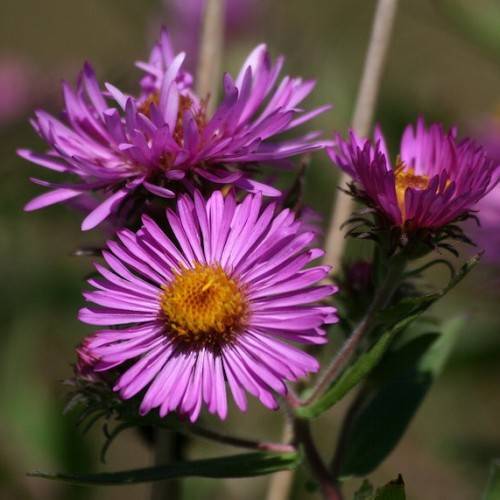
New England aster
Symphyotrichum novae-angliae 'Purple Dome'
Cycle:
Herbaceous Perennial
Watering:
Average
Hardiness Zone:
5 - 8
Flowers:
Flowers
Sun:
Full sun
Leaf:
Yes
Growth Rate:
Low
Maintenance:
Low
Drought Tolerant:
Yes
Salt Tolerant:
Yes
Care Level:
Medium
watering
New England aster requires regular watering in order to thrive. Depending on environmental conditions and the time of year, this plant typically requires twice-weekly watering. During the spring and summer, water the New England aster deeply whenever the top inch of soil feels dry. In late summer and fall, reduce watering frequency; water New England aster once every week or 2. In winter, water the plant only periodically if there is no snow cover to insulate the soil. Monitor the soil in the winter and water only when it has dried out. When watering, ensure the water thoroughly saturates the soil to the root level. Do not let the plant sit in wet soil for an extended period.
sunlight
New England aster (Symphyotrichum novae-angliae 'Purple Dome') does best with full sun, which means getting at least 6-8 hours of direct sunlight per day. Sunlight should be spread evenly throughout the day, with no more than 12 hours of direct sun exposure for this plant species. The aster also appreciates some partial shade, especially in high heat areas, so it is best to provide some afternoon shade in the summer to prevent the plant from becoming stressed.
pruning
For New England aster (Symphyotrichum novae-angliae 'Purple Dome'), pruning should be done after flowering in the summer. This should consist of deadheading, or removing the flowers, as well as cutting back the previous season’s growth by a third. This creates a denser growth and can help prevent seed pods from forming. Regular pruning may also help the plant bloom better in future years. For gardeners in colder climates, pruning should be done in late winter. Cut back the stems to a height of about 1 foot above the ground. Pruning any earlier than this can result in any new growth being damaged or killed by freezing temperatures.
